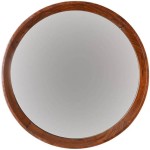How To Mirror iPhone to TV Wirelessly
Wireless screen mirroring offers a convenient way to share iPhone content on a larger display, such as a television. This eliminates the need for cables and allows for a more flexible viewing experience. Several methods are available for mirroring an iPhone to a TV without using Apple's proprietary cables, each with its own benefits and requirements.
Using AirPlay with an Apple TV or AirPlay 2-Compatible Smart TV
AirPlay is Apple's proprietary wireless streaming technology. It provides the most seamless and high-quality mirroring experience for iPhones. If users possess an Apple TV or a smart TV with built-in AirPlay 2 support, this is the recommended method.
To mirror using AirPlay, users should first ensure both the iPhone and the Apple TV or AirPlay 2-compatible TV are connected to the same Wi-Fi network. Then, open Control Center on the iPhone by swiping down from the top-right corner (on iPhone X or later) or swiping up from the bottom of the screen (on older iPhones). Tap the "Screen Mirroring" button. A list of available AirPlay devices will appear. Select the desired Apple TV or smart TV from the list. The iPhone's screen will then be mirrored to the television.
Mirroring with Screen Mirroring Apps
Several third-party screen mirroring apps facilitate wireless streaming from an iPhone to a smart TV. These apps often support various TV brands and platforms, making them a versatile option when AirPlay is not available. Users should research compatible apps for their specific smart TV brand.
The specific steps for mirroring will vary depending on the chosen app. Generally, these apps require installation on both the iPhone and the smart TV (either through the TV's app store or by sideloading). Once installed, users need to connect both devices to the same Wi-Fi network. Launching the app on both devices will usually initiate the connection and mirroring process.
Leveraging DLNA-Compatible Media Servers
DLNA (Digital Living Network Alliance) technology enables media sharing and streaming across compatible devices. Users can install a DLNA-compatible media server app on their iPhone, converting the device into a media server. This allows a DLNA-compatible smart TV or streaming device to access and play content stored on the iPhone, although it doesn't mirror the screen directly.
After installing a DLNA server app, users must ensure the iPhone and the TV or streaming device are on the same network. Within the DLNA server app, users select the media they wish to share. The TV or streaming device can then access this shared content through its DLNA client functionality.
Utilizing Chromecast for Mirroring
Google Chromecast provides another avenue for mirroring an iPhone's screen to a TV. This involves using a Chromecast dongle plugged into the TV's HDMI port and a Chromecast-compatible mirroring app on the iPhone.
Users should first connect their iPhone and Chromecast device to the same Wi-Fi network. Open the Chromecast-enabled app on the iPhone and initiate the casting process. The app will then stream the selected content or mirror the entire iPhone screen to the TV via the Chromecast dongle.
Connecting through a Wireless HDMI Adapter
While not strictly screen mirroring, wireless HDMI adapters offer a way to transmit video and audio from an iPhone to a TV wirelessly. These adapters consist of a transmitter connected to the iPhone (usually through a Lightning adapter) and a receiver connected to the TV's HDMI port.
To use a wireless HDMI adapter, connect the transmitter to the iPhone and the receiver to the TV's HDMI port. Ensure both devices are powered on. Most adapters establish a connection automatically, enabling the iPhone's display output to be shown on the TV.
Mirroring Specific Content Using Native Apps
Many streaming apps (such as YouTube, Netflix, and Amazon Prime Video) have built-in casting or AirPlay functionality. This allows users to directly stream content from these apps to their smart TV or Apple TV without mirroring the entire iPhone screen. This method is often preferred for viewing videos and photos, providing a more streamlined experience.
To mirror specific content, open the desired app and look for the casting or AirPlay icon (typically a square with a triangle in the bottom left corner or a TV icon with an upward arrow). Tap this icon, select the target device (smart TV or Apple TV), and the content will begin playing on the television.
Choosing the most effective mirroring method depends on the available equipment and specific needs. AirPlay with Apple TV offers the most integrated experience for Apple users, while screen mirroring apps and Chromecast provide versatility for other smart TVs. DLNA is suitable for media sharing, and wireless HDMI adapters offer another alternative. Utilizing the casting features within individual apps provides a streamlined experience when mirroring specific content isn’t required.

3 Ways To Screen Mirror Iphone Any Tv No Apple Required 2024

How To Mirror Iphone Tv Without Apple 3 Methods 2024

Connect Mirror Iphone To Android Tv Free Trial Airbeamtv

Simple Ways To Mirror Iphone Tv Without Wifi 6 Steps

3 Ways To Cast Iphone Tv Without Wifi 2024 Guide

How To Screen Mirror Iphone Samsung Tv Ios Airbeamtv

Iphone How To Mirror Your Screen On A Computer Without An Emulator The Economic Times

Simple Ways To Mirror Iphone Tv Without Wifi 6 Steps

How To Screen Mirror Iphone A Non Smart Tv

Use Airplay To Stream Or Mirror The Screen Of Your Iphone Ipad Apple Support







